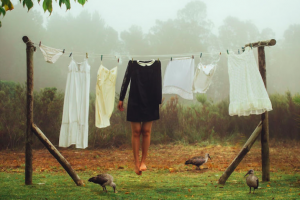Reflecting on my year in ASTU. It was an incredible experience that went by so fast it feels like just yesterday I was writing our first paper of the year — genre analysis. ASTU has by far been my most challenging course this year, but it has also been the most rewarding. I can confidently say that I have grown significantly over the year. Not only have I further developed my writing but also improved my ability to cope with the stress of university. ASTU has taught me to unlearn, relearn and grow my writing skills in ways that will help me greatly throughout my university career. However, this course has taught me much more than just writing skills. I have learned so much about life writing of minority groups. Starting at the beginning of the year from reading, I am Malala by Malala Yousafzai and Diary of a Young Girl by Anne Frank to finishing off the year with Diamond Grill by Fred Wah. I have learned an immense amount about life narratives written by individuals with the greatest focus on those of a minority group. We have learned about individuals struggles, such as Ryan Knighton in Cockeyed; groups struggling like Fred Wah in Diamond Grill.
Something else I am really going to take away from this course is everything that I have learned about British Columbia. Having lived in BC my whole life and I am embarrassed to say that I did not know much about its history. I am so appreciative for all the work we did in ASTU this year focusing on minority groups in British Columbia. It was amazing to look at the archives in the Rare Books and Special Collections (RBSC) at the UBC library and being able to get my hand on original documents from Chinese immigrants coming to Vancouver. Having the opportunity to flip through the incredible sketch books of local artists like Jack Shadbolt is an opportunity i am immensely grateful for.
After looking at Jack Shadbolt’s amazing sketches in the RBSC I later ended up working on a group project studying his sketches. This was the only group project I participated in all year and I learned a lot about myself as well as what I need to improve in a group setting in order for my voice to be heard. Our group focused on his sketches of birds and how they progressed and changed throughout his sketchbooks. Jack Shadbolt is not usually known for his bird sketches and that is why we wanted to focus on them — to bring a new aspect of his work to light. We presented our project on a Tumblr page which was a great way to present because it allowed our group to share with viewers as much information as we wanted and photos of all the bird drawings we found in his sketchbook.
Overall ASTU has been an incredible experience that has taught me much more than just academic skills and will continue to help me throughout my university experience and in life.
